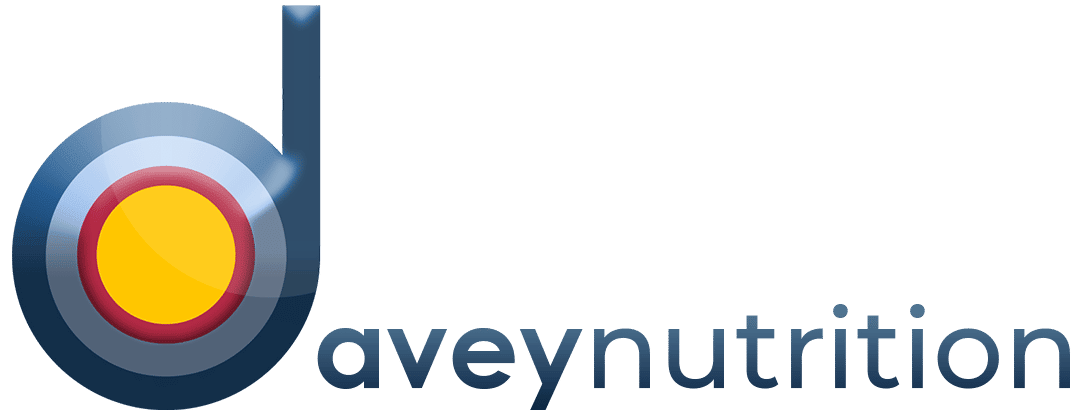What are Macronutrients?
Macronutrients are essential nutrients that are required in large amounts by the human body for optimal health and performance. They are what’s contributing to the calorie content of the diet. The three primary macronutrients are carbohydrates, proteins, and fats. Each macronutrient plays a crucial role in supporting our body for optimal function and well-being.
Ultimately, calorie balance is what determines whether you will lose weight or gain weight, however, macronutrients are what determines whether the weight you lose or gain is body fat or muscle (not entirely, but to a large extent) and there are also minimum targets (and optimal targets) for some of the macronutrients that we must eat to ensure we are healthy. So let’s dive into each of the macronutrients…
Carbohydrates

Carbohydrates are the primary source of energy for the body. They are found in a variety of foods, including fruits, vegetables, grains, and legumes. Carbohydrates are broken down into glucose, which is the primary source of energy for the body’s cells. Consuming adequate amounts of carbohydrates can improve exercise performance and prevent fatigue. Additionally, consuming carbohydrates after exercise can improve muscle recovery and glycogen replenishment. From a sporting performance lens, carbohydrates are very important and consuming inadequate amounts can impair performance.
For a sedentary individual or the average gym goer, the demand for cabohydrates is a lot less. However, because of carbohydrates role on brain function, energy levels, the impact of wholegrains on health and immune function, carbohydrates are not something we want to remove or even significantly reduce. Rather, it’ll be helpful to choose our carbohydrates wisely and aim for most of them coming from wholegrains and vegetables (most of the time).
There are 3 types of carbohydrates; Complex, Simple & Fibre.
Complex carbohydrates, such as whole grains, legumes, and vegetables, contain longer chains of sugar molecules that take longer to break down and digest, leading to a slower and more sustained release of energy. This is in contrast to simple carbohydrates, such as sugars and refined grains, which are broken down and absorbed quickly, leading to a rapid spike in blood sugar levels often followed by a crash in energy. For example, a potato, which is a complex carbohydrate, takes longer to digest and releases energy slowly, while a chocolate bar or a slice of cake, which are simple carbohydrates, are digested quickly and provide a rapid burst of energy. Consuming complex carbohydrates can help provide sustained energy throughout the day, maintain stable blood sugar levels, and promote feelings of fullness and satiety.
For more information on the role of fibre in the diet, check out our articles:
How can I add more fibre to my diet?
Context is Key
While complex carbohydrates are generally recommended for sustained energy and stable blood sugar levels, simple carbohydrates can be beneficial in some scenarios, such as before intense exercise. This can be particularly useful before high-intensity exercise, as it can improve performance and delay the onset of fatigue. For example, consuming simple carbohydrates, such as a sports drink or a piece of fruit, before a high-intensity workout can provide the necessary energy to perform at a high level.
The amount of simple carbohydrates needed before exercise depends on the type, intensity and duration of the activity. For short-duration, high-intensity activities, such as sprinting or weightlifting, 30-60 grams of carbohydrates are recommended to be consumed 30-60 minutes before to provide a quick burst of energy. For longer-duration activities, such as endurance running or cycling, 60-90 grams of carbohydrates are recommended to be consumed in the pre workout meal/snack.
For more information on carbohydrates for sports performance, check out this article Fueling for training and games
Protein
Proteins are essential for building and repairing tissues in the body. They are found in a variety of foods, including meat, fish, eggs, dairy products, and plant-based sources such as soy, legumes, and nuts. Consuming adequate amounts of protein can help build and maintain muscle mass and improve athletic performance and also support fat loss and body composition.
Adequate protein intake is important for maintaining muscle mass and function, particularly as we age. As we get older, we are at increased risk of developing sarcopenia, which is the age-related loss of muscle mass and strength. Consuming adequate protein levels can help to slow down the progression of sarcopenia and preserve muscle mass, which is important for maintaining mobility, independence, and overall quality of life. Research suggests that consuming at least 1.6 grams of protein per kilogram of body weight per day can help to prevent muscle loss and support muscle maintenance. Higher levels up to 2.2g/kg/bw are in many cases, what we recommend for anyone with a fat loss or muscle building goal.
Protein-rich foods include lean meats, fish, eggs, dairy products, legumes, and nuts, and incorporating these foods into the diet can help to ensure adequate protein intake.
Fats

Fats are necessary for the body to absorb fat-soluble vitamins and provide energy for low-intensity activities. Consuming adequate amounts of dietary fat can improve exercise performance and support a healthy hormonal function.
It is recommended that 20-35% of daily calories from fat, with no more than 10% coming from saturated fats. Good sources of healthy fats include nuts, seeds, avocados, and fatty fish such as salmon. It is important to limit consumption of fats which are found in processed and fried foods.
It is essential to include all three macronutrients in our diet to ensure optimal health and performance. A balanced diet that includes a variety of foods from each food group can help us obtain all the necessary macronutrients. For example, a meal that includes grilled chicken breast, brown rice, and steamed broccoli would provide carbohydrates, proteins, and fats, as well as a variety of vitamins and minerals. It’s often what we do with this combination that makes or breaks our ability to maintain a balanced diet. For example, it’s not just about eating plain foods, in isolation. We eat a variety of foods that provide a variety of nutrients. Many of our recipes provide a balance between all three macronutrients and can help to provide you with ways to cook not only balanced meals but tasty and satisfying meals that can help you find a way to make eating well, enjoyable.
Do I need to track my macros?
Tracking food intake can be a useful tool in the initial stages of building awareness around our current eating habits. By logging our meals and snacks, we can gain a better understanding of our macronutrient and calorie intake, and identify areas where we may need to make adjustments to better align with our nutrition requirements. However, it’s important to remember that tracking is just one tool in our toolbox, and that listening to our own body is an equally important skill. Interoceptive awareness, or the ability to sense and interpret internal bodily sensations, can help us to recognize when we are hungry, full, or in need of certain nutrients. By learning to trust our own hunger and fullness cues, we can reduce the need for tracking apps and build a more intuitive relationship with food.
That being said, tracking apps can still be a helpful educational tool, particularly for those who are new to nutrition or struggling with portion control. By using these apps to track our food intake for a short period of time, we can build a visual representation of the types of foods we are including in our diet and better understand what a healthy portion size looks like. This can help us to make more informed choices when we are eating out or preparing meals at home, and ultimately build a more sustainable and balanced approach to eating. On the daveynutrition website we have our own custom meal planner that provides you with the ability to map out your week with the recipes/meals you want to include each day and this will calculate the nutrition information at the end of each day so you know if you’re meeting your own individual requirements.
References
Thomas DT, Erdman KA, Burke LM. American College of Sports Medicine Joint Position Statement. Nutrition and Athletic Performance. Med Sci Sports Exerc. 2016;48(3):543-568. doi: 10.1249/MSS.0000000000000852
Ivy JL. Dietary strategies to promote glycogen synthesis after exercise. Can J Appl Physiol. 2001;26 Suppl:S236-45. doi: 10.1139/h2001-044
Phillips SM, Van Loon LJ. Dietary protein for athletes: from requirements to optimum adaptation. J Sports Sci. 2011;29 Suppl 1:S29-38. doi:10.1080/02640414.2011.619204
Helms ER, Zinn C, Rowlands DS, Brown SR. A systematic review of dietary protein during caloric restriction in resistance trained lean athletes: a case for higher intakes. Int J Sport Nutr Exerc Metab. 2014;24(2):127-138. doi: 10.1123/ijsnem.2013-0054
Schwingshackl L, Hoffmann G. Monounsaturated fatty acids, olive oil and health status: a systematic review and meta-analysis of cohort studies. Lipids Health Dis. 2014;13:154. doi: 10.1186/1476-511X-13-154Simopoulos AP. Omega-3 fatty acids in inflammation and autoimmune diseases. J Am Coll Nutr. 2002;21(6):495-505. doi: 10.1080/07315724.2002.10719248









